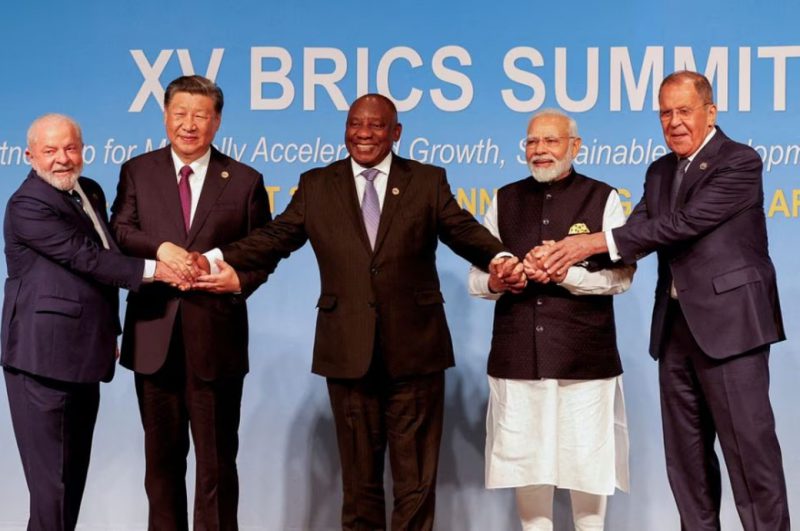BRICS is now an 11-member alliance after the bloc inducted six new countries into the group during the August summit. Saudi Arabia, the UAE, Argentina, Egypt, Iran, and Ethiopia have been invited to be a part of the group. The expansion has strengthened BRICS financially and on the decision-making front. New multilateral trade deals could be introduced focusing on using local currencies for payment and not the US dollar. BRICS confirmed that the idea of dethroning the US dollar is a long-term goal.
Also Read: BRICS: Oil Prices Remain Under Pressure as U.S. Dollar Strengthens
Therefore, the BRICS vision for 2030 is much different than that of today, as it plans to take on the US dollar with oil, gold, and local currencies. The financial order could see a paradigm shift in the coming years as BRICS will stop using the US dollar.
BRICS 2030 Vision: Oil, Gold, Local Currencies & Death to US Dollar


The BRICS alliance is looking to take advantage of the oil markets after the induction of oil-producing countries into the bloc. Saudi Arabia, the UAE, Egypt, Iran, and Ethiopia export millions of barrels of oil every year across the world.
Also Read: US Economy Could Settle Into a Long & Slow Grind, Predicts Economist
If BRICS forces other countries to settle trade in local currencies and not the US dollar, the greenback will be the first currency to take a hit. The dollar will find less means to fund its deficit if the scenario plays out by 2030.
In addition, BRICS countries are massively accumulating gold and will be the largest buyers of the precious metal in 2023. Speculations are rife that BRICS could back their yet-to-be-released currency with gold to challenge the US dollar. A gold-backed BRICS currency could be a safe bet in the forex markets due to its lower volatility.
Also Read: BRICS: Gold Prints New Monthly Low in Sept 2023 as U.S. Dollar Rises
In conclusion, BRICS has three sectors to challenge the US dollar by the end of the decade, in 2030. The three sectors are crude oil, gold, and the usage of local currencies for global transactions against the US dollar.





